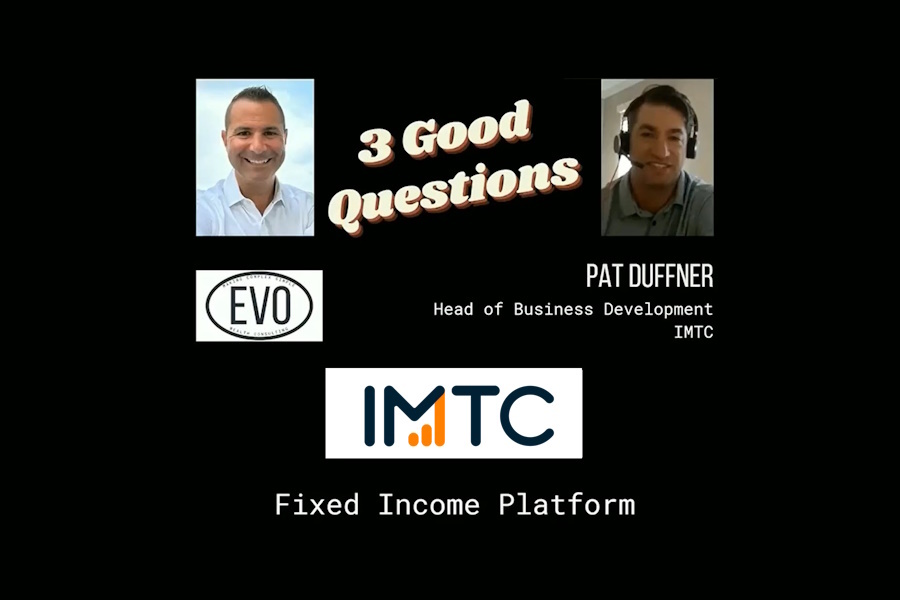The Top 3 Barriers to Performance for Fixed Income Managers

The fixed income investment landscape has changed dramatically over the past twenty years. Over the period from 2000 to 2020:
- The bellwether U.S. 10-year Treasury yield fell by roughly 80%, declining from over 5% to less than 1%.
- Yields on many European government bonds fell below zero and stayed there (a situation that had previously been so unimaginable that many lines of computer code simply did not allow for the possibility).
- The percentage of the IG corporate bond market rated Baa/BBB increased from roughly 17% in 2000 to 50% in 2020.
- Fixed income ETFs, which did not even exist before 2002, captured over $1 trillion in assets in the U.S. alone.
New portfolio strategies are increasingly becoming part of the fixed income ecosystem and managers need to embrace these innovative strategies to remain relevant. For example, factor investing, which is commonplace in equities, is being extended to fixed income markets. That may be a low volatility strategy, one that identifies value across issues or focuses on quality issuers with strong balance sheets. Separately, incorporating sustainability and impact investing into fixed income portfolios is a growing area of demand.
With interest rates so low and durations so long, turning to credit to find yield is a logical move. As rates have declined, corporate bond issuance has increased dramatically – companies are eager are to lock in low-cost funding, providing bond-pickers with a wide range of choices. At the same time, with average credit quality declining, the risk associated with chasing yield without doing one’s homework has also increased, and doing homework takes time. Furthermore, since investors can now access the corporate bond market via low-cost ETFs, active managers have to offer something more while still charging competitive, aka lower, fees. These developments have made it increasingly difficult for bond managers to outperform the competition, deliver compelling results to clients, and stay profitable, which is why consolidation is so high within the industry.
Fixed income managers tugged in opposite directions – do more with less
Given this new landscape, a fixed income portfolio manager’s time is an increasingly precious resource. It takes time to evaluate portfolio strategies, analyze trade-offs across maturities, sectors, and issuers, evaluate credit risk, make relative value assessments, seek best execution, and so on. Spending time on routine tasks adds little value, such as manually gathering data to compare yields, durations, and sector weightings across accounts or relative to a benchmark. Similarly, going back and forth between various screens and spreadsheets to make trade allocation decisions may seem to be a necessary part of the day, but such activities are actually barriers to performance.
What 3 operational issues hinder portfolio managers the most?
Many fixed income managers rely on legacy platforms and home-grown processes that have not evolved in a dramatic way over the past two decades. This inherently gives an advantage, in terms of cost structure and thus performance, to firms that embrace new approaches and streamline their workflow. Those who stick with outmoded manual methods must invest a great deal of their time in those manual efforts, with little or no return on that investment. Managers whose processes are more efficient have more time to allocate to alpha-generating activities that can differentiate them from the competition. Firms with inefficient systems are like racehorses whose jockeys are constantly struggling to saddle up and get through the starting gate after the other horses are already heading down the track.
Taking into consideration all the issues discussed above, the main barriers to performance for fixed income portfolio managers can be deduced to these three categories:
- Visibility: Without having the right insight at an investor’s fingertips, investment decisions can take longer to determine, or issues can fall through the cracks. When identifying portfolios that need attention at the start of the day or assessing the potential impact of trades, PMs should have the right information in a dashboard to act quickly. In addition, it’s abundantly clear how important it is to compare and optimize portfolio decisions across all accounts managed at one time. With better technology, portfolio managers can see the improvements potential trades would make across portfolios quickly and automatically, with compliance checks embedded in the process. It is an absolute necessity to have visibility in every step of the investment workflow.
- Capacity: Manual processes limit an individual manager’s capacity. There are no economies of scale when a new client or a new issue allocation requires more time spent manually updating portfolio metrics, checking compliance, or optimizing scenarios. This limits PM’s ability to provide more proactive portfolio management and customization that provides added value to clients. Additionally, it limits a firm’s ability to increase AUM and handle more accounts without additional headcount. Establishing more efficient processes can allow a firm to double the number of accounts it can effectively manage without increasing the number of hours for portfolio managers.
- Fragmented systems and workflows: Using disparate databases and spreadsheets is not only terribly inefficient, but it also leads to errors. Spending time pulling together critical portfolio information from different places, flipping back and forth between various screens that each show only a portion of what is needed to make decisions is frustrating and error-prone. The old saying, “measure twice, cut once” becomes “look in four or five places before you pull the trigger.” Complacency, the enemy of efficiency, makes it difficult to appreciate how much time is being wasted when this is the way things have always been done. In contrast, assessing the effectiveness of investment workflows to make decisions is a game-changer, because the amount of time saved can be astronomical.
Get ahead with technology or risk falling behind
The harsh reality is, staying competitive in this environment means charging lower fees than in the past. That means either accepting lower profits, which can make it difficult to attract and retain talent and even threaten a firm’s viability, or making radical changes to cost structures. Those changes do not have to entail slashing expenses across the board, which in reality, often lead to a reduction in both efficiency and client satisfaction. The intelligent way to reduce costs is to:
- Improve visibility across accounts for better decision-making, leading to better performance.
- Increase capacity by making processes more efficient, leading to economies of scale that allow the firm to handle more clients at a higher level of service.
- Integrate data and workflows to develop more effective investment workflows without the burden of manual processes and data reconciliation. This allows portfolio managers more time to do what they do best – find ways to generate compelling performance.
Technology is only as good as how it is used. IMTC is designed by and for fixed income professionals, empowering them to take action and make decisions quickly and accurately with real-time data and analytics capabilities. It allows you to future-proof your business; driving operational efficiencies, mitigating risk and delivering performance, to ultimately enable business growth.
This paper is intended for information and discussion purposes only. The information contained in this publication is derived from data obtained from sources believed by IMTC to be reliable and is given in good faith, but no guarantees are made by IMTC with regard to the accuracy, completeness, or suitability of the information presented. Nothing within this paper should be relied upon as investment advice, and nothing within shall confer rights or remedies upon, you or any of your employees, creditors, holders of securities or other equity holders or any other person. Any opinions expressed reflect the current judgment of the authors of this paper and do not necessarily represent the opinion of IMTC. IMTC expressly disclaims all representations and warranties, express, implied, statutory or otherwise, whatsoever, including, but not limited to: (i) warranties of merchantability, fitness for a particular purpose, suitability, usage, title, or noninfringement; (ii) that the contents of this white paper are free from error; and (iii) that such contents will not infringe third-party rights. The information contained within this paper is the intellectual property of IMTC and any further dissemination of this paper should attribute rights to IMTC and include this disclaimer.





